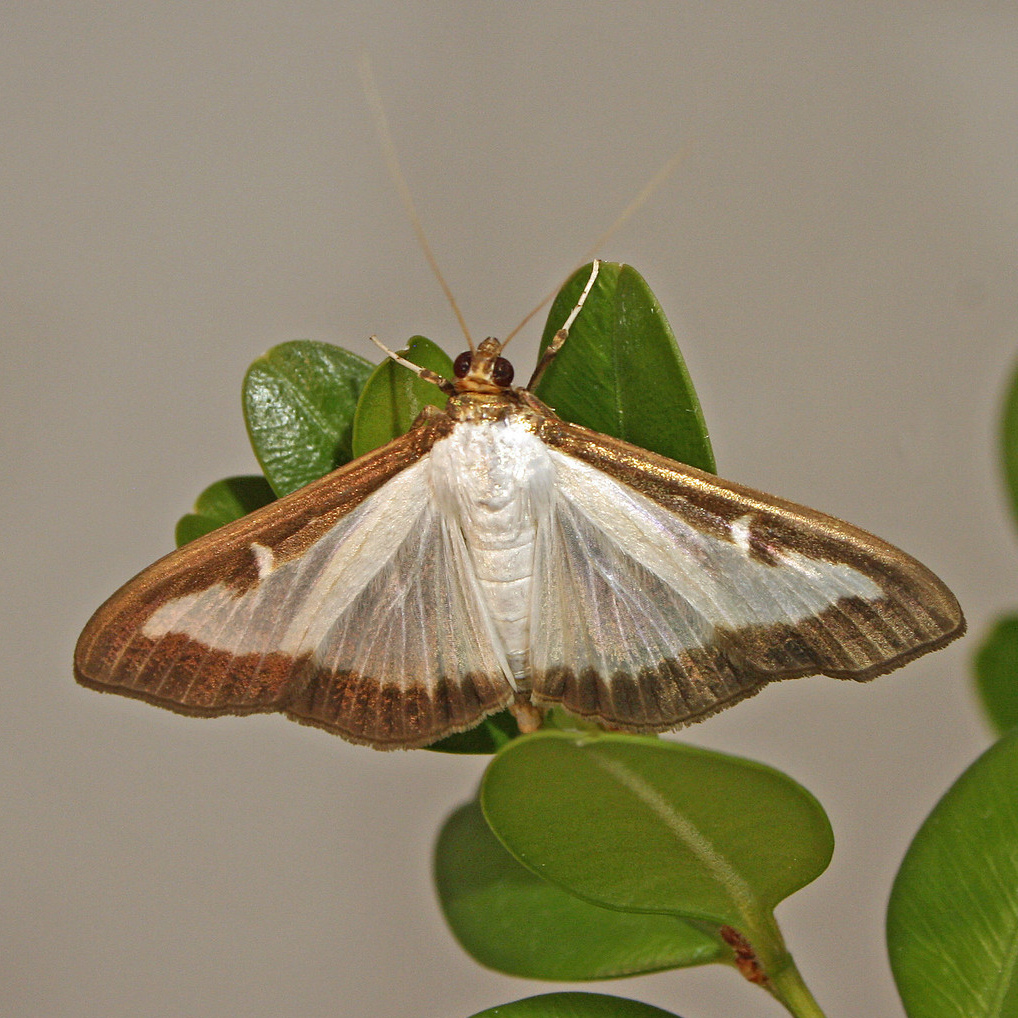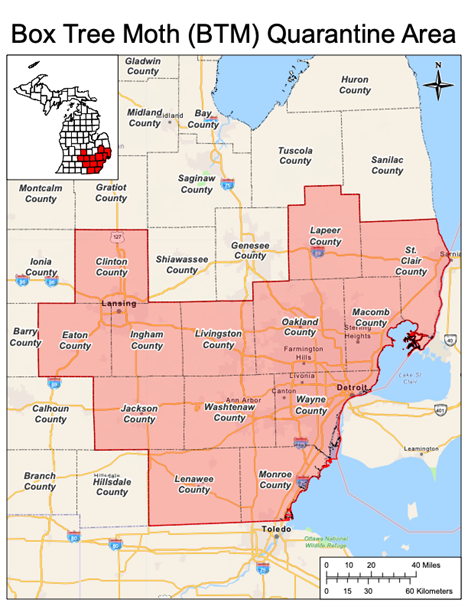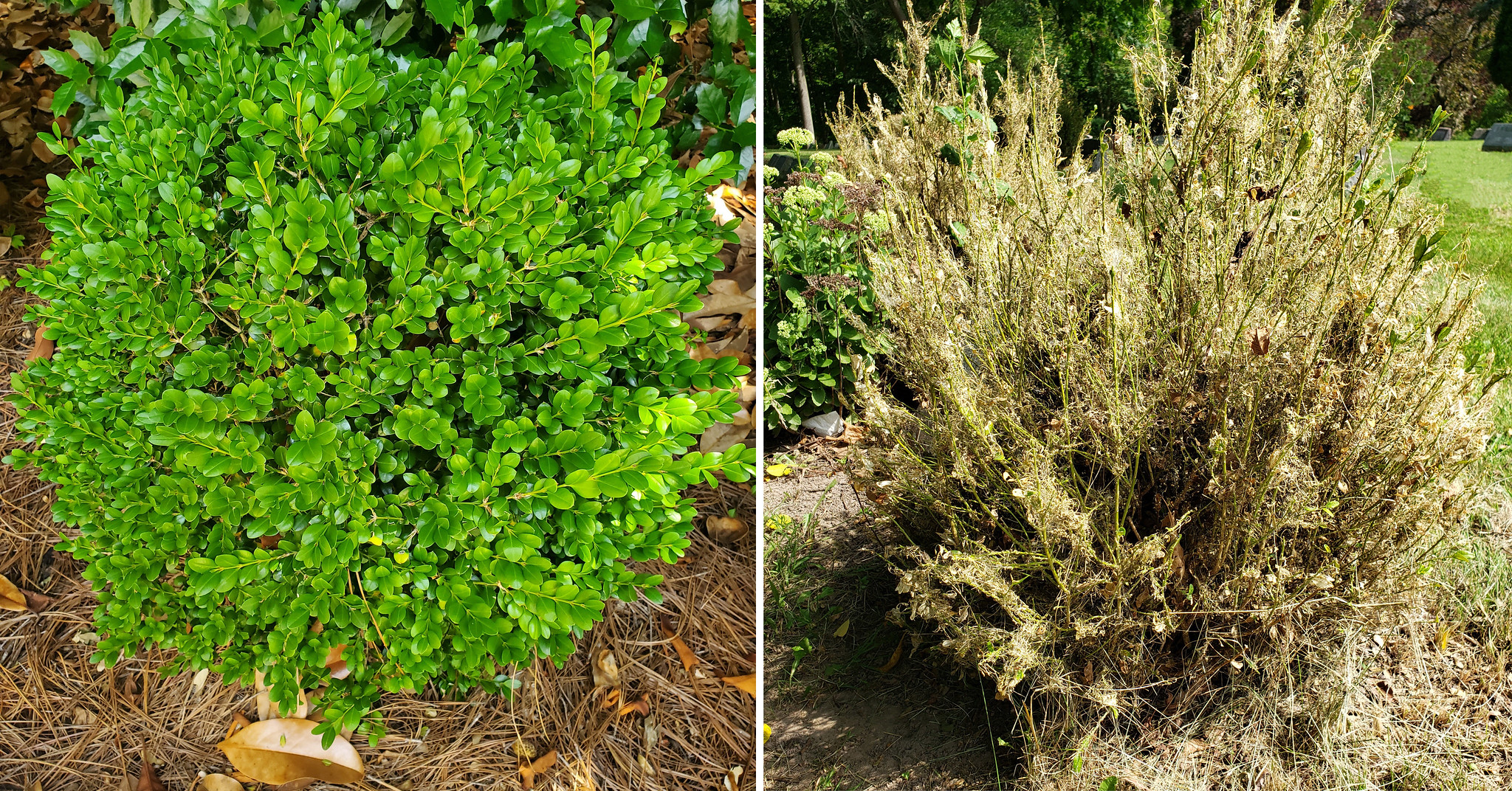Box tree moth quarantine covers 13 southern Michigan counties
The regulated area for box tree moth includes 13 southeast and central Michigan counties: Clinton, Eaton, Ingham, Lapeer, Livingston, Oakland, Jackson, Washtenaw, Wayne, Lenawee, Monroe, Macomb and St. Clair.

The Michigan Department of Agriculture and Rural Development (MDARD) first implemented a quarantine on boxwood shrubs (Buxus spp.) on April 1, 2023. The quarantine is to prevent the spread of the box tree moth (Cydalima perspectalis, Photos 1 and 2), a new invasive insect pest that has destroyed an estimated 75% of boxwoods in Europe. The current quarantine area includes 13 southeast and central Michigan counties: Clinton, Eaton, Ingham, Lapeer, Livingston, Oakland, Jackson, Washtenaw, Wayne, Lenawee, Monroe, Macomb and St. Clair (Figure 1).

Quarantine restriction overview

The Box Tree Moth Interior Quarantine that was established in 2023 has been updated through the growing seasons and as the pest has been found in a larger geographical region. It has only had minor changes from the 2024 to the 2025 growing season. Currently, these are the regulations for movement of Buxus plant material within and out of the quarantine area:
- Movement of regulated articles (Buxus plant material — live or dead — and box tree moths) within the regulated area requires compliance with the interior quarantine as detailed on their stipulation sheet, however a signature is not required.
- Movement of regulated articles to areas outside of the regulated area requires a signed compliance agreement. The compliance agreement requires that a nursery: install traps, train designated personnel on box tree moth, scout and treat plants for box tree moth, and complete a pre-shipment inspection and certification. Nurseries also need to alert the destination state’s Department of Agriculture of the incoming plant shipment and maintain records for at least 36 months. For more, check out, “Updated box tree moth quarantine and compliance agreement for shipping out of the quarantine counties.”
A brief history of the box tree moth in Michigan
In May 2021, the USDA announced that it had confirmed the presence of box tree moth (Cydalima perspectalis) in the continental United States and was working to contain and eradicate the invasive pest. Six states received shipments of boxwood shrubs from a nursery that was found to have a box tree moth infestation. Box tree moths were detected at three locations in Michigan and were subsequently eradicated by MDARD and the USDA Animal and Plant Health Inspection Service (APHIS).
Michigan State University Extension partnered with MDARD and USDA APHIS to implement an early detection program for box tree moth. With the help of businesses and residents across the state, we placed special traps designed to detect the presence of the invasive box tree moth at over 45 sites throughout Michigan in 2021 and 2022. Fortunately, no box tree moths were found at any of these locations in the two seasons that these sites were active and inspected.
As the 2022 trapping season was wrapping up, however, a resident in southeast Michigan noticed significant damage to boxwoods on their property. After an investigation in early November 2022, USDA APHIS confirmed the detection of box tree moth at two residences in Lenawee County. It is still unclear whether the populations found in southeast Michigan are connected to the infested boxwood shipments of 2021 or if they found their way into the state through other means.
In 2024, the USDA hung traps in areas surrounding the perimeter of the quarantine area to look for box tree moth. As of May 2024, the majority of reports of box tree moth sightings from the online reporting system were in Oakland County. Box tree moth was reported to also be in Lapeer County, leading to the expansion of the quarantine.
What’s happening now
The quarantine has been established for the 13 counties in southeastern and central Michigan. MDARD will begin trapping for box tree moth in June 2025.

Report suspected infestations
USDA, MDARD and MSU Extension are all asking Michigan residents to examine their boxwood plants closely for signs of an infestation (Photo 3). If you suspect you have found an infestation, especially are outside the quarantine area, please take photographs and report it at www.Michigan.gov/ReportBTM. Please allow state or federal agriculture officials to inspect your boxwood before spraying or disposing of the suspected infestation. Once an infestation is confirmed, you will receive instructions on how to treat or dispose of the infested plant material.
Preventative management
Nursery growers and landscapers may want to consider a precautionary spray program. This could be especially helpful in localities within, and adjacent to, the quarantine area. When spraying preventatively for the box tree moth, MSU Extension recommends two seasonal applications of a labeled pyrethroid product (e.g., bifenthrin) — once in late July and once again in early September. Be sure that the product is labeled for application at that site.
Alternatively, growers and landscapers can also spray a Bacillus thuringiensis (Bt) product once every two weeks starting in late June. Bt is a bacterium that kills insects when ingested. Be sure to use the kurstakistrain, as this is the only one that specifically targets caterpillar larvae. Look for product labels that say Bacillus thuringiensis subsp. kurstaki (Btk).
Homeowners within the quarantine area may want to implement a precautionary management program as well. Please follow the recommendations for nursery growers and landscapers as described above.
Considerations for cut flower growers and florists
Boxwood stems and branches are sometimes used in bouquets, arrangements and holiday wreaths. It’s important for growers, florists and other floral artists within the quarantine area that buy, sell or transport Buxus plant parts to be mindful of the quarantine restrictions. Floral industry professionals that operate in the quarantine area are encouraged to advise their customers of the restrictions associated with the transport and disposal of boxwood plant parts.
Additional resources
More information on box tree moth biology, identification and management can be found at the MSU Extension Box Tree Moth website, the Michigan Invasive Species Program website and the USDA APHIS box tree moth resource page.
This work is supported by the Crop Protection and Pest Management Program [grant no 2024-70006-43569] from the USDA National Institute of Food and Agriculture. Any opinions, findings, conclusions, or recommendations expressed in this publication are those of the author(s) and do not necessarily reflect the view of the U.S. Department of Agriculture.



 Print
Print Email
Email

